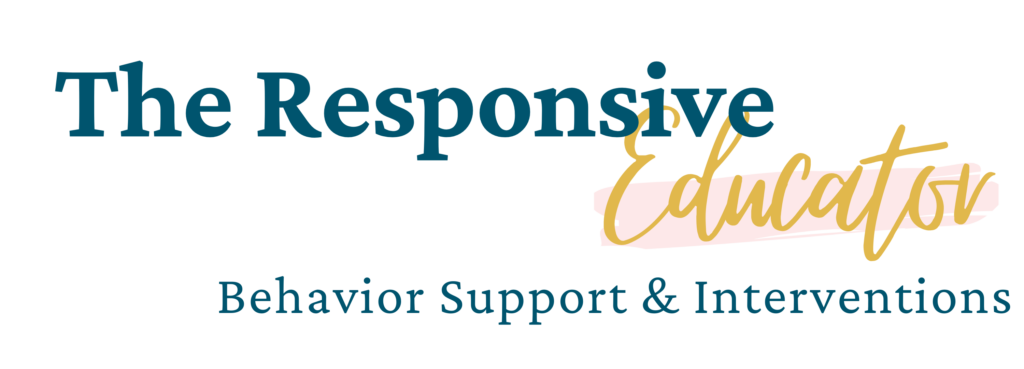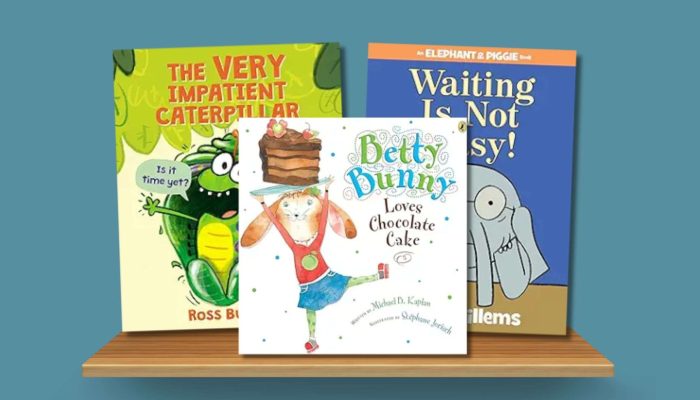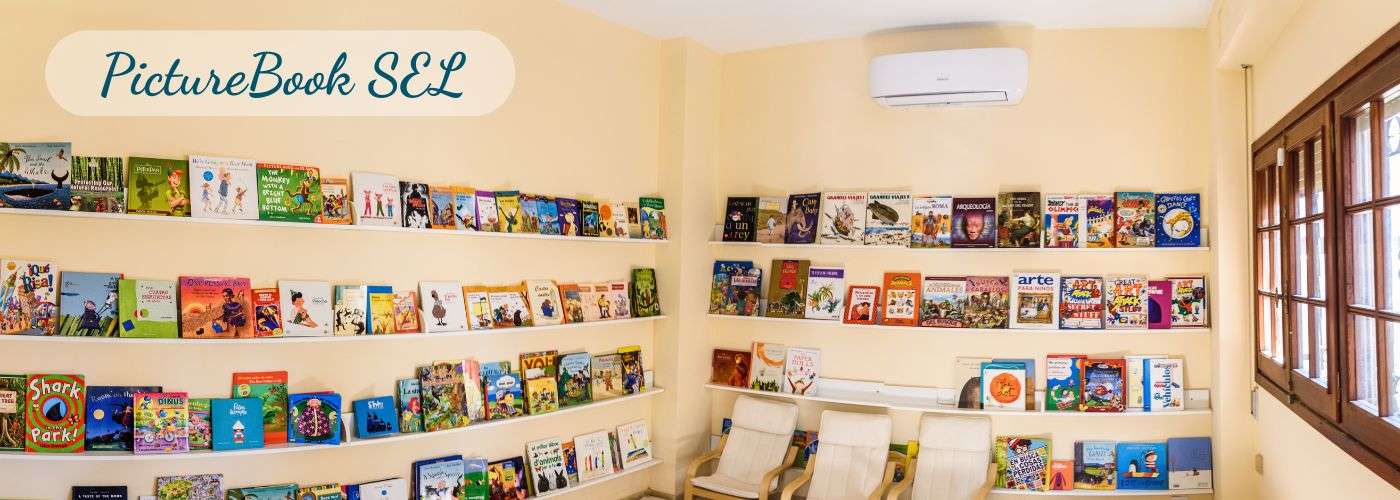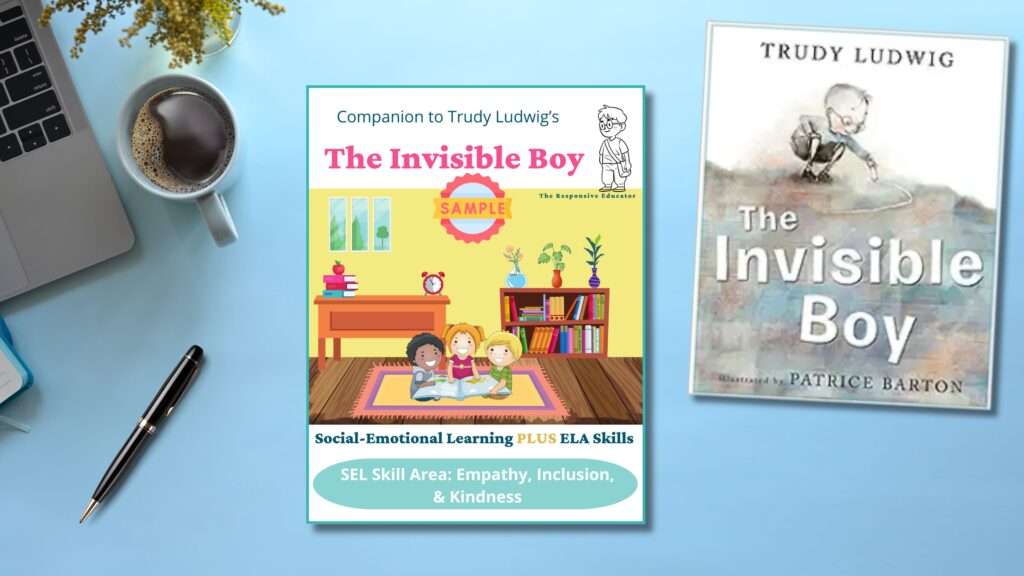


In today’s fast-paced world, patience can feel like an elusive skill—especially for children. With endless access to immediate answers, entertainment, and rewards, learning to wait and appreciate the process is more important than ever. Patience isn’t just about enduring delays; it’s about developing self-control, resilience, and a sense of calm in a busy world.
Thankfully, picture books offer a wonderful way to introduce the concept of patience to children. Through engaging stories, relatable characters, and teachable moments, these books create opportunities for meaningful discussions about delayed gratification, self-regulation, and finding joy in the waiting.
This collection of books is perfect for helping children of all ages understand that good things come to those who wait. Whether it’s learning to wait for a surprise, understanding the life cycle of a butterfly, or navigating the daily struggles of delayed gratification, these stories provide gentle guidance for developing patience in a fun and relatable way. Let’s explore these titles together and discover how they can inspire calmness, understanding, and growth in children.
For some of these books, I have created interactive read-alouds to enrich their use in the classroom. These interactive read-alouds include discussion questions, activities, and prompts that engage students and deepen their understanding of the book’s themes. More interactive read-alouds are on the way. If there are specific books for which you would like to see a read-aloud created, please contact me using the form at the bottom of the page.
To learn more about supporting social-emotional learning and using interactive read-alouds in the classroom, check out these posts:
(As an Amazon affiliate, I earn a small commission if you purchase products through the links on my posts. Thank you for your support!)
Summary: Betty Bunny Loves Chocolate Cake introduces us to Betty Bunny, a precocious child who falls in love with chocolate cake at first bite. Betty declares she wants to marry chocolate cake, but her mother insists she learn patience before indulging in dessert. Betty’s spirited antics and determination to get her way lead to laugh-out-loud moments and relatable challenges for anyone raising or teaching young children. Though Betty struggles with the concept of delayed gratification, she begins to understand its importance (even if she doesn’t like it).
Description: While this book is not specifically designed to teach patience, Betty Bunny Loves Chocolate Cake offers a humorous and engaging starting point for conversations about the importance of self-control. Michael Kaplan’s storytelling captures the boundless energy and thought processes of preschoolers, making Betty Bunny a lovable, if mischievous, protagonist. The vibrant illustrations by Stéphane Jorisch bring to life the humor and chaos of family life, with expressions and details that parents and children will enjoy exploring together.
Though Betty is a young child, the book’s themes of patience and delayed gratification make it suitable for older students as well. It can serve as a lighthearted and accessible way to explore these concepts with children in elementary grades, who may still find self-control challenging. Betty’s journey reminds readers of all ages that learning patience is a process, often accompanied by funny missteps and occasional frustrations.
Reviews and Considerations: Readers often praise Betty Bunny Loves Chocolate Cake for its humor and relatable storyline. Many parents and teachers find it a favorite read-aloud, with children drawn to Betty’s bold personality and funny reasoning. Families enjoy the way the book uses humor to approach the concept of delayed gratification, making it easier for children to connect with the message.
Some parents also appreciate the sibling dynamics depicted in the story, as Betty’s older brothers and sister add layers of humor and life lessons. The book has been described as “hilarious” and “charming,” with readers noting how the humor appeals to both kids and adults. While Betty’s age and antics might initially seem suited for younger readers, many have found that the lessons about patience and consequences resonate well with older students. Using this story as a conversation starter can help children of all ages reflect on their own struggles with waiting and self-control.

Summary: I’ll Wait, Mr. Panda by Steve Antony follows Mr. Panda as he tests the patience of his black-and-white animal friends. While everyone else grows impatient and leaves, only a penguin is willing to wait—and is rewarded with a delightful surprise: a giant doughnut! This charming story introduces young readers to the concept of patience and its rewards through simple text, playful illustrations, and an unexpected ending.
Description: Through Mr. Panda’s quirky demeanor and the amusing reactions of his friends, this book gently teaches the value of patience in a fun and engaging way. Steve Antony’s signature minimalist illustrations highlight the humor and emotions of the characters, making it easy for children to connect with the story. The narrative emphasizes that waiting isn’t always easy, but it can lead to something worthwhile—an important lesson for both children and adults.
The book’s simplicity makes it an excellent choice for young children, including toddlers and preschoolers. However, its themes of delayed gratification and the rewards of persistence also resonate with older students, making it a versatile resource for addressing patience across different age groups. Whether read aloud at home or used as a classroom discussion starter, I’ll Wait, Mr. Panda is a delightful way to explore this life skill.
Reviews and Considerations: Readers and educators alike praise I’ll Wait, Mr. Panda for its simplicity and charm. Parents often highlight how the book keeps children entertained while reinforcing a valuable lesson about waiting. Many appreciate the playful way the story delivers its message, noting that children enjoy the humorous reactions of the animals and the surprise ending.
The whimsical illustrations are frequently lauded for their ability to capture attention, with readers mentioning how much fun it is to give the characters different voices during read-alouds. The book’s pacing and straightforward text make it especially appealing to young children with shorter attention spans.
Some reviewers mention that the story feels repetitive compared to its predecessor, Please, Mr. Panda, but still find it effective in teaching patience. A few note that young readers may need help connecting the lesson to their own experiences, making this book an excellent starting point for discussions about why waiting can be challenging but rewarding.









Summary: Waiting Is Not Easy! by Mo Willems features best friends Elephant Gerald and Piggie in a humorous and relatable story about patience. When Piggie announces that she has a surprise for Gerald, he’s thrilled—until he learns that he has to wait. Gerald’s frustration grows as the wait drags on, but Piggie reassures him that the surprise will be worth it. In the end, Gerald discovers that sometimes the best things really do come to those who wait.
Description: Mo Willems brings his signature wit and expressive illustrations to this delightful addition to the Elephant & Piggie series. The story captures the universal struggle of waiting and the emotions that come with it—excitement, frustration, and finally, joy. Simple dialogue in speech bubbles paired with dynamic body language and facial expressions make this book accessible to early readers while still engaging for older kids.
The book’s interactive style makes it a fun read-aloud, and children will relate to Gerald’s impatience as they anticipate the big reveal alongside him. At its core, the story offers a gentle yet powerful lesson about the rewards of waiting, making it an excellent choice for teaching delayed gratification and self-control.
Reviews and Considerations: Readers of all ages adore Waiting Is Not Easy! for its humor, relatability, and heartwarming message. Parents and educators frequently praise the book’s ability to turn a challenging concept—patience—into an engaging and memorable lesson. Many reviewers mention that children enjoy acting out the characters, especially Gerald’s dramatic groans and exaggerated reactions, which adds an element of fun to the story.
The surprise ending delights readers and provides a satisfying payoff, reinforcing the book’s message that waiting can lead to great rewards. Some parents note that the story has helped their children connect the lesson to real-life situations, whether it’s waiting for a treat or learning to be patient during transitions.
A few reviewers point out that the simplicity of the plot may not capture the attention of older readers, but they still appreciate the story’s humor and emotional depth. Others highlight how the book encourages expressive reading and helps children practice identifying emotions through the characters’ reactions.









Summary: Patience Is My Superpower by Alicia Ortego follows the story of eight-year-old Dan, a boy who finds waiting to be a challenge. When Dan learns he must wait an entire week to visit his grandparents, he becomes frustrated and impatient. However, with guidance from his grandparents and the experiences of waiting for a pie to bake or an egg to hatch, Dan learns that patience can lead to wonderful rewards. Through realistic examples and charming rhymes, Dan discovers that waiting doesn’t have to be boring and can even become a time of growth and fun.
Description: This beautifully illustrated book is part of Alicia Ortego’s Superpower series, which introduces young readers to essential life skills. Patience Is My Superpower uses relatable scenarios to help children understand the value of delayed gratification and how waiting can lead to positive outcomes. Told in engaging rhymes, the story makes the concept of patience accessible and enjoyable for children, while also providing parents and educators with tools to open discussions about self-control.
The book highlights practical strategies for managing impatience and demonstrates that waiting can be a meaningful part of everyday life. With colorful, appealing illustrations, this story invites young readers to see themselves in Dan’s experiences, making it a wonderful resource for classrooms and families.
Reviews and Considerations: Parents, educators, and children alike praise Patience Is My Superpower for its gentle approach to teaching a challenging skill. Many reviewers highlight the book’s ability to weave the theme of patience into relatable and memorable moments, like waiting for a pie to bake or enduring a long car ride. The rhyming text is often described as engaging and easy for children to follow, making it an enjoyable read-aloud choice.
Several readers note that the story resonates with young children, helping them relate to Dan’s struggles and triumphs. Teachers appreciate the book’s versatility, finding it useful for encouraging discussions about self-control and impulse management. The illustrations are frequently mentioned as vibrant and complementary to the narrative, keeping young readers captivated.
While the book receives high praise overall, a few reviewers express concerns about the use of words like “hate,” suggesting it might not align with their preferred vocabulary for children. Some also mention minor issues with rhyming flow, though these do not detract significantly from the story’s impact. Despite these minor critiques, Patience Is My Superpower is widely regarded as an inspiring and effective tool for nurturing patience and emotional growth in children. It’s a must-read for families and educators looking to help kids develop this vital life skill.









Summary: The Very Impatient Caterpillar by Ross Burach humorously portrays the struggle of waiting through the lens of a caterpillar preparing to undergo metamorphosis. With vibrant illustrations and a lively narrative, this story introduces young readers to the process of transformation as the main character grapples with impatience. The caterpillar’s hilarious inner monologue and attempts to rush the natural process make for an engaging and relatable tale that also teaches real-life scientific facts about the butterfly life cycle.
Description: While The Very Impatient Caterpillar is not specifically designed to teach patience, it serves as an excellent conversation starter about the value of waiting and perseverance. The caterpillar’s over-the-top reactions and dramatic frustration provide a lighthearted way for children to see the challenges of delayed gratification.
The book’s playful tone, coupled with its educational undertones, makes it a great addition to lessons about metamorphosis. Ross Burach cleverly balances humor and information, ensuring that children learn while they laugh. The bold, colorful illustrations and expressive characters keep readers engaged, making it suitable for a range of ages.
Reviews and Considerations: Readers consistently praise The Very Impatient Caterpillar for its humor, vibrant artwork, and ability to captivate children. Teachers often highlight its effectiveness as both an educational resource for discussing the butterfly life cycle and a tool for exploring social-emotional concepts like self-regulation and patience.
Many reviews note how children delight in the caterpillar’s exaggerated reactions, finding his impatience both amusing and relatable. This makes the story a hit for read-aloud sessions, especially when paired with dramatic voices. Parents appreciate how the book gently encourages discussions about waiting while keeping kids entertained.
Critics point out that the story can feel a bit lengthy for younger readers, but most agree that the humor and engaging dialogue help maintain attention. The book’s ability to introduce scientific vocabulary while entertaining makes it a valuable addition to any classroom or home library.









Summary: Teach Your Dragon Patience by Steve Herman provides a fun and engaging way to explore the challenges of impatience and the importance of waiting. With the relatable struggles of a pet dragon who wants everything immediately, the story introduces strategies to help children embrace patience in their daily lives.
Description: This book follows the journey of a young dragon as he learns that waiting can be a rewarding experience. Through everyday examples like baking a cake or planting a seed, the dragon discovers that patience isn’t just about enduring—it can also involve proactive and fun activities. With its charming illustrations and simple, relatable language, Teach Your Dragon Patience makes understanding the value of waiting accessible to young readers.
The book emphasizes that patience is an essential life skill and normalizes the difficulty of waiting, offering practical solutions that children can implement. It also helps kids see waiting as a positive experience that can lead to extraordinary outcomes.
Reviews and Considerations: Readers love the Dragon series for its approachable storytelling and how it breaks down complex emotions into lessons kids can grasp. Teach Your Dragon Patience is praised for its engaging narrative and for encouraging children to view waiting as an opportunity for creativity and growth.
Parents and educators highlight its usefulness as a teaching tool, especially for children who struggle with self-regulation. Mental health professionals note that the book offers a gentle introduction to emotional control and impulse management.
Some reviewers expressed a desire for more varied examples of patience beyond waiting for food or plants, but most appreciated the story’s clear and relatable message. Additionally, the humorous, endearing nature of the dragon makes it easy for children to connect with the lessons in a non-preachy way.



























Sign up now to receive a free sample of “The Invisible Boy” Interactive Read-Aloud Lesson Plan! This comprehensive resource includes engaging activities designed to help your students develop empathy and inclusion.
By signing up, you will also join our newsletter, where you’ll receive:
Join our community of educators dedicated to fostering social-emotional growth in the classroom!


*In Progress. Links will become active as pages are available.
Anger
Anxiety / Worry
Apologizing
Autism
Bad Day
Be Yourself
Body Safety & Personal Boundaries
Bravery & Trying New Things
Choices & Consequences
Cleaning Up/ Doing Chores
Conflict Resolution
Compromise / Cooperating
Coping with Change
Creativity & Imagination
Deployment
Differences & Diversity
Dreams & Aspirations
Dyslexia
Empathy & Compassion
Feelings & Behavior
Follow Rules & Directions
Foster Care & Adoption
Friendship Skills
Gratitude
Grief & Loss
Growth Mindset
Healthy Habits
Helping Others
Honesty & Integrity
Including Others
Kindness & Generosity
Managing Physical Actions
Manners & Social Expectations
Mindfulness
Mistakes
Organization & Planning
Patience
Peer Influence
Perseverance
Personal Space & Boundaries
Perspective & Point of View
Physical/Medical Disabilities
Positive Attitude
Resilience
Responsibility
Sadness & Finding Hope
School Success
Sensory Processing
Separation Anxiety
Sharing
Speaking Politely
Tattling vs. Telling
Teasing & Bullying
Technology
Trauma Recovery
Understanding Feelings
Winning & Losing